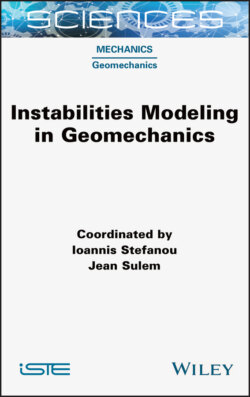Читать книгу Instabilities Modeling in Geomechanics - Jean Sulem - Страница 17
1.5.2. Thermal pressurization problem
ОглавлениеOne of concerns in the technology of nuclear waste disposal in clays is the effect of the heat of nuclear decay on the mechanical behavior of clay as a supporting medium surrounding the heat source. One of the multiphysics effects results from a huge difference between the thermal expansion of pore water and thermal expansion of clay (or thermal contraction, depending on whether it is in elastic or plastic range). Laboratory experiments have shown that undrained heating at constant total stress loading conditions relevant to the technology leads to instability at a temperature between 70 and 90°C, as can be seen from the effective stress path in Figure 1.17(a) (Hueckel and Pellegrini 1991).
Figure 1.17. (a) Effective stress paths during undrained heating of Boom clay (Hueckel and Pellegrini 1991). Notably the thermally generated pore pressure caused the effective stress to reach values where their further decrement is statically inadmissible (see section 1.3). This can be compared to Figure 1.10. (b) Simulation of the effective stress path and yield locus evolution for a centrally heated (from 16 to 93° C) Boom clay around an axisymmetric borehole with an increase in the critical state parameter of around 43% (from Hueckel et al. 2011)
In a borehole boundary value problem, the problem is exacerbated by the very low permeability of clay, compared to thermal conductivity. Indeed, the effective stress path up to the 0.5 m vicinity of the waste canister approaches the critical states in both considered cases of constant and variable friction angle (Figure 1.17(b); Hueckel et al. 2011). As the thermo-elasto-plastic deformation is coupled with heat flow and hydraulic flow, its stability and uniqueness should result from consideration of all three fields.
